
Callery Pear, Ornamental Pear, ‘Bradford,’ ‘Cleveland Select,’ ‘Aristocrat,’ and other cultivars
Pyrus calleryana
What’s the harm?
A medium-sized tree, Callery pear (Pyrus calleryana) spreads rapidly in fields, roadsides, and open canopy forests. It creates a new dense structural layer in the invaded habitat and suppresses growth in layers below. It alters the soil by releasing a chemical that suppresses other plant species. Callery pear forms stiff woody thorns that can puncture shoes and tires and inhibit movement through a thick stand. The fruit of Callery pear is attractive to birds who then spread the species to new sites. Once established on a site, this species is extremely difficult to control or remove.
What is it?
Callery pear is medium-sized tree that ranges from 30 to 50 feet in height. Branches may bear sharp woody thorns, especially on trees that have naturalized. Leaves are 1.5 to 3 inches in length, simple, ovate, crenate, and glabrous. White, showy flowers appear in late winter to early spring. Blooms occur in bunches of 5 to 12 flowers. Ripening in late fall, the small, fleshy, reddish-brown fruits attract many bird species.
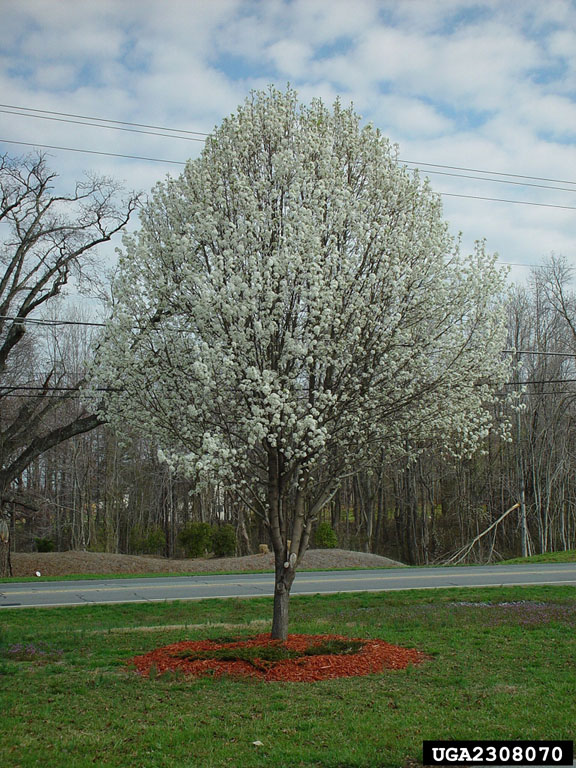
Young 'Bradford' cultivar in bloom.
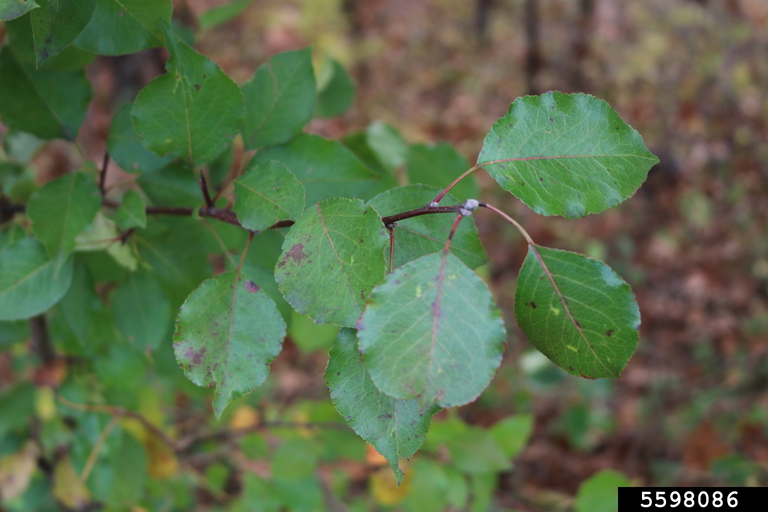
Leaves
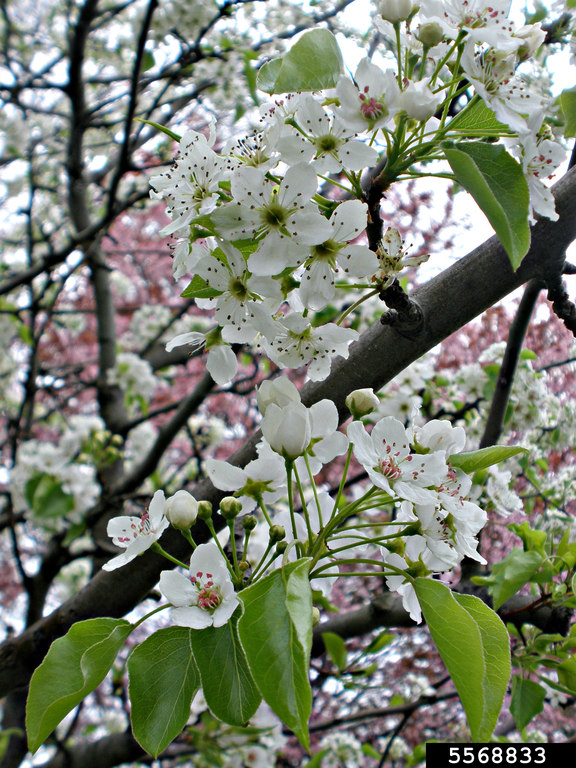
Flowers
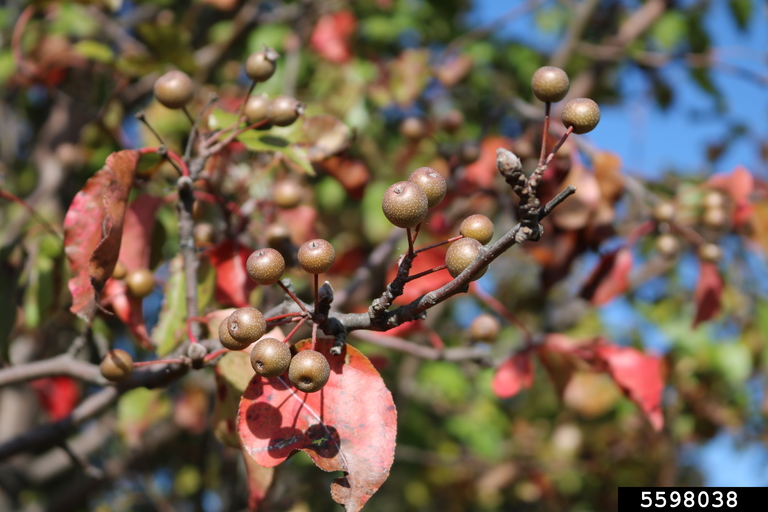
Fruit
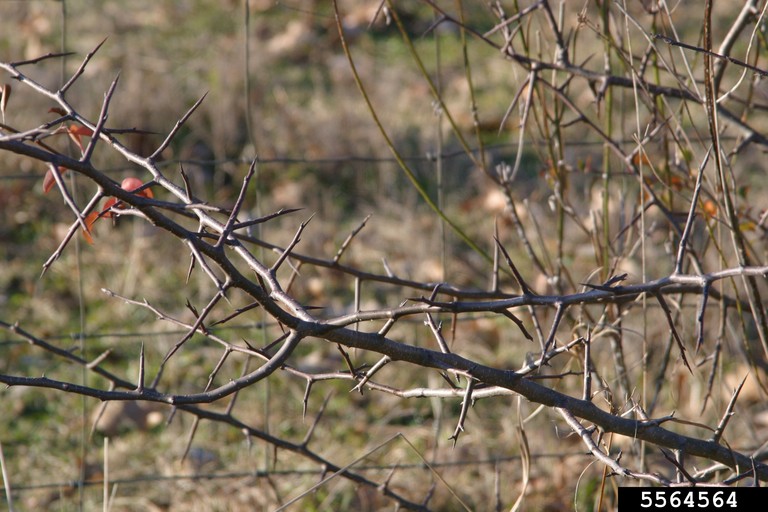
Thorns
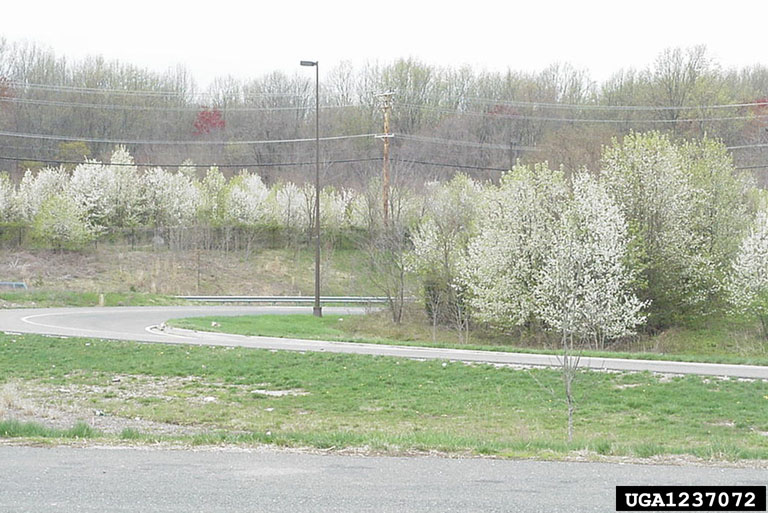
Infestation
Where is it from?
Callery pear is native to an area of East Asia, including China, Korea, Vietnam, Taiwan, and Japan.
How did it get here?
In the nineteenth century, specimens of Callery pear were shipped from China to Paris by the botanical explorer and missionary Joseph M.M. Callery. In the U.S., a cultivar of Pryus calleryana named ‘Bradford’ became a very popular ornamental in the 1960s. The cultivar was promoted as sterile. However, it was later learned that cultivars of Callery pear can outcross with other Pyrus cultivars and species to produce fertile fruits. The small fruits are attractive to birds and small mammals that readily distribute the seeds to habitats outside cultivation.
Where is it now?
In Virginia, Callery pear has been documented in counties across the state, as shown here:
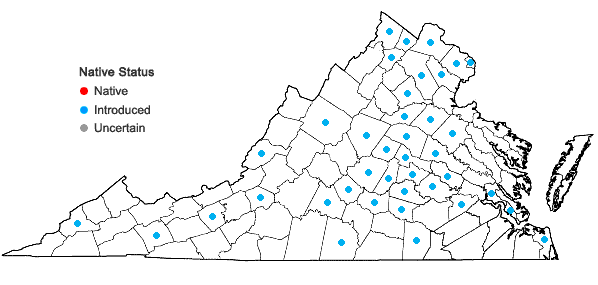
Follow this link to see an aggregate map of recent reports of Callery pear on iNaturalist and EDDMapS mapping platforms. Note: not all reports are of escaped species. However, planted cultivars can become genetic vectors for reproduction and spread of seeds.
Can it be controlled?
Seedlings can be hand pulled. Once the tree is a few years old, cutting will result in resprouting and numerous shoots. Herbicide treatment must be used to kill the tree. Virginia Department of Forestry recommends using imazapyr- or triclopyr-based herbicides to control tree species.
What’s being done?
Ohio has banned growing or selling Callery pear. South Carolina and Pennsylvania have passed similar bans that will take effect in 2024. In Virginia, Callery pear is listed on the DCR Invasive Plants list.
How do I report an infestation of this species?
You can map and report an escaped occurrence or an infestation via the iNaturalist or EDDMapS mobile apps. Reports with photos and location information can also be submitted here >>.
What else can we do?
Many wonderful native alternatives are available for gardening and landscaping purposes. Check out this list and ask your local nursery about where you can purchase them.
How can I learn more?
Watch an informative video from Pennsylvania State Extension gives you Callery pear history and biology in less than four minutes.
Read an excellent article posted in March 2023:
Share this fact sheet on identification, history, and control methods for Callery pear.
Photo credits: All courtesy of the Bugwood Network under Creative Commons - Non-commercial.
 Virginia Invasive Species
Virginia Invasive Species